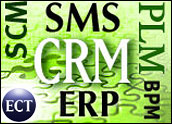
This week I’m trying something different.
I usually try to go in-depth with one subject for a column. To do that I frequently start out writing about a number of different ideas just to see where they end up. Many of the ideas don’t make it into a column because they never reach a sufficient length.
As two-time Nobel Prize winner Linus Pauling once said, “If you want to have a lot of good ideas, you need to have a lot of ideas.” I’ll only confess to having a lot of ideas.
It’s not that these ideas that don’t make the cut are bad. Occasionally I return to one and find new information available and additional things to say.
My Research Notes
But most of the time I just end up with lots of little nuggets that are too short to be columns. Truth be told, I can’t bear to hit the delete key, so they end up occupying some of the voluminous disk space that comes with most computers these days.
Culling the space can be a challenge because, as a market researcher, I believe all of the material has potential value.
Here are some research notes on a number of short subjects.
SFA
There is a definite seasonality to buyers’ preferences in CRM. When the economy is weak, companies want to save money, and I see more emphasis on call-center and service applications. The opposite happens when the economy takes off — everyone wants Sales Force Automation (SFA) technology.
Lately I’ve noticed a trend toward sales effectiveness applications. These apps are supposed to help you save money and resources in the sales process. Not a bad idea, but what does it mean to my little paradigm for the economy?
It seems to me that sales effectiveness is still a less than ideal approach to selling. I have always been a big fan of asking the customer what they want before figuring out how to bring it to them efficiently. Maybe I waited too many tables in college or something.
Marketing
Customer feedback could be the most important “sleeper” application in the CRM deck. Feedback is part of marketing but it usually doesn’t get big play.
Everything seems to be about better organizing the work to reduce waste and inefficiency. That’s all necessary stuff, but at some point you need to ask customers what they need, like and want.
A lot of what customer feedback is about goes to the heart of what Shoshana Zuboff, a Harvard Business School professor, dealt with in her book, The Support Economy. Customers really want to tell their vendors about their needs, but too often there is no mechanism. The only avenue open is the sales transaction, which can only act as a negative feedback loop for products that already exist. It doesn’t necessarily reveal what people want.
One bright spot was a survey I did last year in which CRM buyers said they were interested in marketing applications that conveyed the voice of the customer up the chain of command to the executives and product people. That’s an interesting and very hopeful sign.Too often marketers are judged on what they spend or the cost per lead, rather than on cost per deal or cost of revenue.
There’s a lot that goes into a marketing campaign that can get blown away by thoughtless action downstream — by, for example, a sales rep deciding not to pursue a lead because its projected close falls outside the current time frame, or simply because there are only so many hours in a day and he has to cherry pick. We need sales and marketing systems that are more flexible and that can work through the traditional barriers of time and territory and tell us what happens to leads that are generated.
New Crop of Vendors
It’s a healthy sign that software companies are still entering the CRM market, though I have to question the motivations some of them have.
Take, for example, me-too products entering the hosted CRM space. Some of these guys have nothing but low prices to hang their hats on. That usually ends up badly, and the survivors get a black eye when the low-price guys run out of runway and crash because they aren’t generating enough cash.
Still, there are some very interesting new vendors with applications that fit into niches that didn’t exist before the first wave of CRM. Now, with a CRM architecture in place, enhanced wireless technologies, and a generally accepting marketplace, it should be fun watching these new companies grow.
Component CRM
I am starting to see companies like Aplicor that use off-the-shelf objects to build their CRM applications. They pay a one-time fee for a documented object that they then modify to their specific needs and incorporate into products. One result is incredibly fast product development, especially for a small company. This approach is pretty innovative, and I wonder why no one else has thought of doing it. Or have they?
I wonder if component CRM will become competitive in larger firms. It’s doubtful. Early adopters might jump at such an opportunity, but this is not an early adopter market any more. This approach has more risk than simply buying a solution, and the marketplace has been conditioned not to accept any level of risk.
Disaster Recovery
This hurricane season has been quite a test for people in all walks of life who live in southern states. It must have been a good time to test disaster recovery plans. I wonder how it all worked. Probably a good thing to research.
Denis Pombriant is former vice president and managing director of Aberdeen Group’s CRM practice and founder and managing principal of Beagle Research Group. In 2003, CRM Magazine named Pombriant one of the most influential executives in the CRM industry.





















































